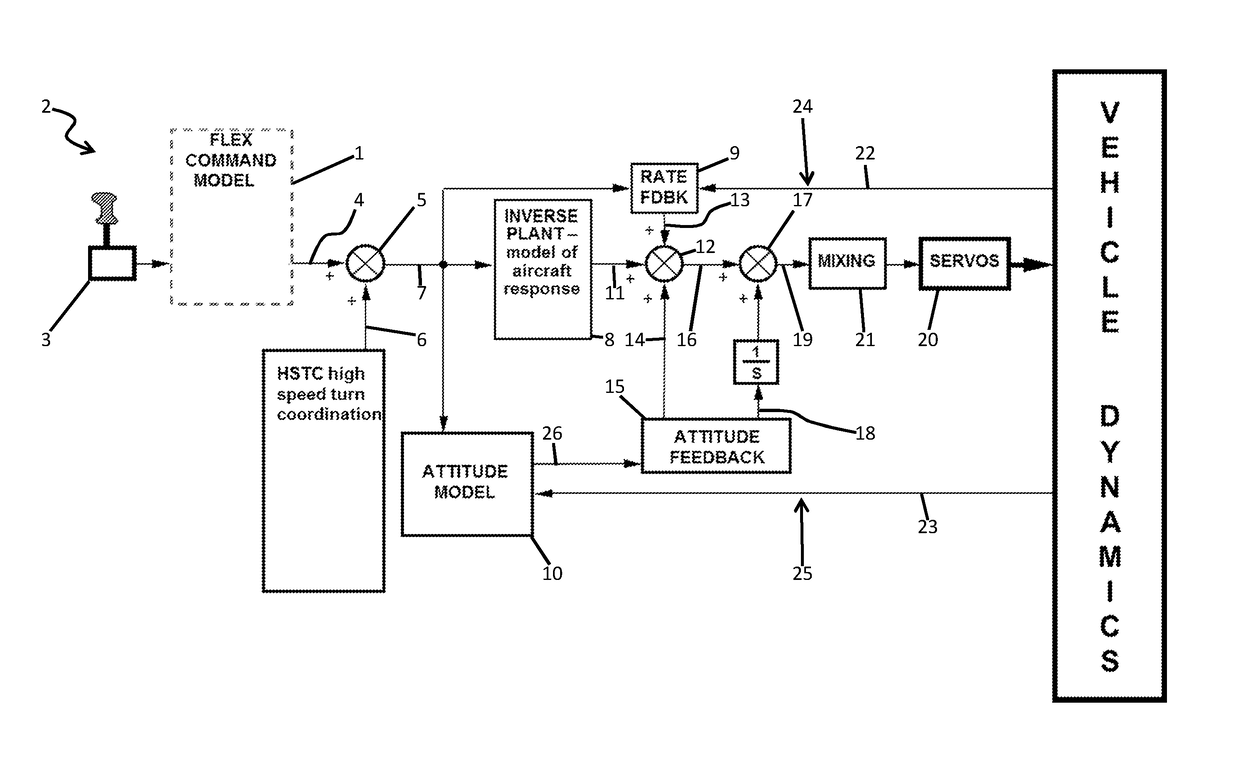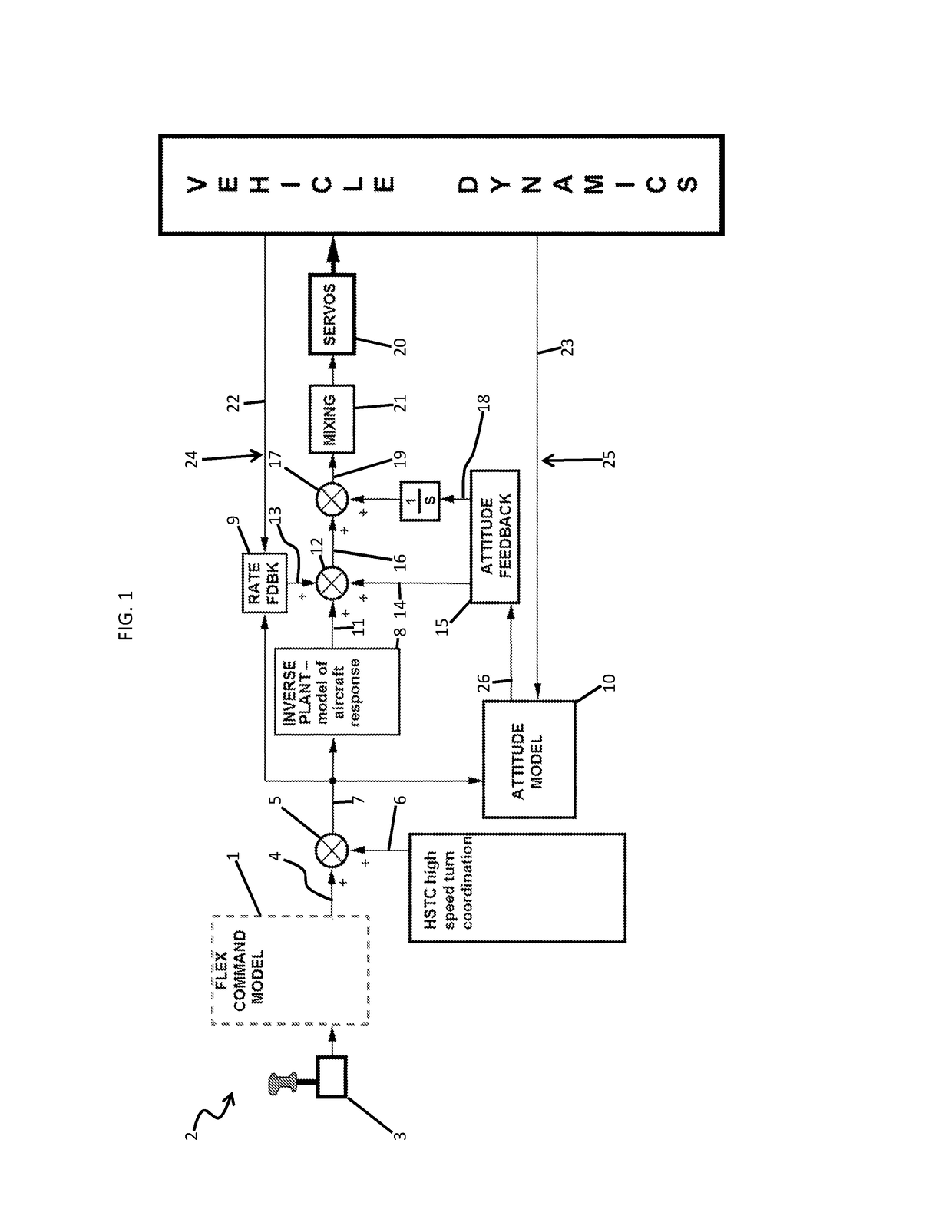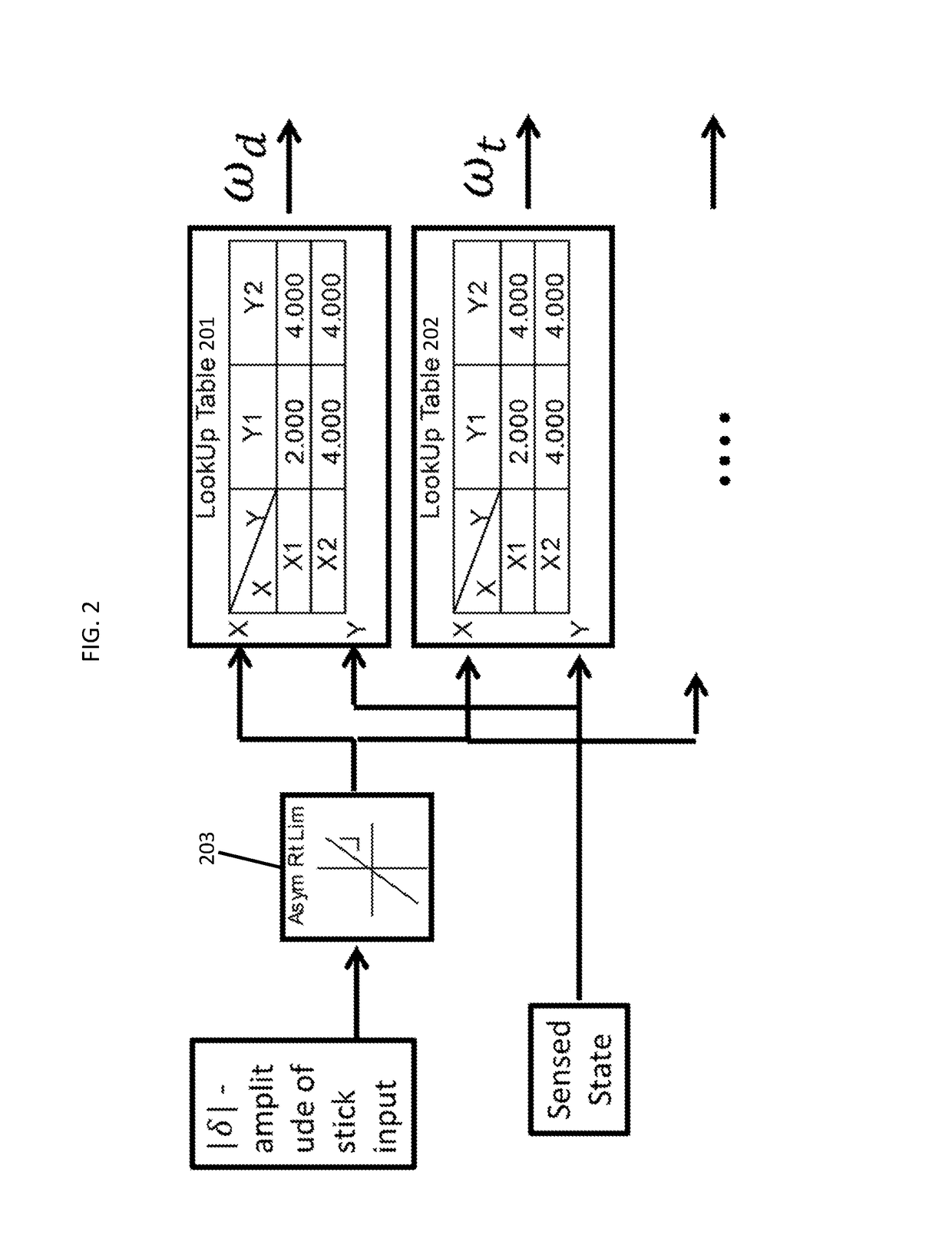Flexible command model for aircraft control
a command model and aircraft technology, applied in the field of flexible command models, can solve problems such as increased test cost and pilot confusion, software complexity, and compromise on stability or maneuverability, and achieve the effects of less agile, more maneuverability, and more stabl
- Summary
- Abstract
- Description
- Claims
- Application Information
AI Technical Summary
Benefits of technology
Problems solved by technology
Method used
Image
Examples
Embodiment Construction
[0032]As will be described below, multiple command model response types are continuously blended together based upon stick amplitude and airspeed. Implementation of only an RCAH command model response type may involve some compromises to aircraft stability, particularly for aircraft which have a high sensitivity of speed to attitude such as coaxial rigid rotor helicopters; and implementation of ACVH command model response type may involve some compromises to aircraft agility: implementations of both modes provide for both stability and agility characteristics.
[0033]In particular, two methods are provided which allow for the continuous blending between response types based upon the magnitude of a pilot stick input and aircraft airspeed while retaining the ability to explicitly impose an angular acceleration limit. One method uses a single integrated command model architecture that accounts for the dynamic (time-varying) response type blending between rate and attitude command respons...
PUM
 Login to View More
Login to View More Abstract
Description
Claims
Application Information
 Login to View More
Login to View More - R&D
- Intellectual Property
- Life Sciences
- Materials
- Tech Scout
- Unparalleled Data Quality
- Higher Quality Content
- 60% Fewer Hallucinations
Browse by: Latest US Patents, China's latest patents, Technical Efficacy Thesaurus, Application Domain, Technology Topic, Popular Technical Reports.
© 2025 PatSnap. All rights reserved.Legal|Privacy policy|Modern Slavery Act Transparency Statement|Sitemap|About US| Contact US: help@patsnap.com



